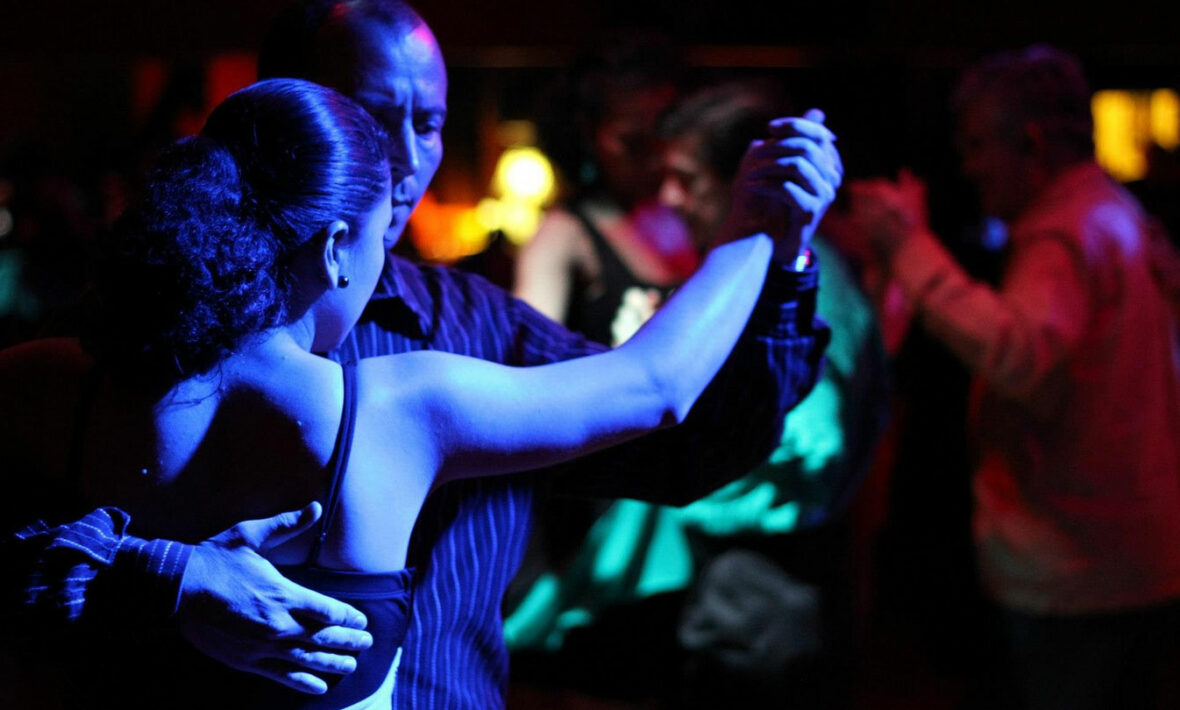
It’s sexy, uber passionate and requires masses of flexibility, so the Argentine tango utterly deserves its iconic status. How the sultry dance started though is and perhaps always will be a mystery, but there are some facts everyone can agree on – how this dance took South America by storm and became one of the world’s most famous dance styles.
WHERE DID IT COME FROM
Not to be confused with the Spanish tango or flamenco dancing, the Argentine tango is its own evolved dance from a common heritage. One theory is that it was brought to Argentina by African slaves as the word ‘tango’ has a meaning in African cultures of “closed place” or “reserved ground”, and by the time slavery was abolished in 1853, free men would gather and dance in a certain place like the meaning held. It’s also possible the word tango is derived from the Latin verb tanguere, “to touch”, and could have been picked up by Africans on the slave ships. It’s likely to be a combination of both European and African elements, and this is also seen through the music and dance steps.
Over time the tango became a recognisable term for a meeting place and dancing ritual for the working-class communities in Buenos Aires and Montevido during the 19th century. The sensual dance was quite daring for its time as you can imagine, and as it was danced by the lower classes, it was shunned by wealthy folk in the cities, leading to it being performed in low-lit bars and clubs where immigrants and artistic folk gathered.
After political struggles shook Argentina and the wider world, things like prohibition and dictatorships led to the dance being driven underground, later being revived in the 1980s by a group of young people ready to show the world what the tango means again. From there its popularity soared and Argentina remembered its dance, before spreading it throughout Europe and the world.

THE MEANING
You’ll notice a lot of traditional Argentine tangos start quite slow and set the sexy scene, but you might be surprised to learn the meaning of this isn’t supposed to be all bedroom-eyes vibes, it’s actually the opposite. The Argentine tango lyrics often tell nostalgic, sad tales of lost or unrequited love, and are laments for what cannot be. Modern versions of the dance have extended beyond this of course, but the original meaning was one of despair.

THE MUSIC
The Argentine tango music is varied compared to other tango styles, and this is likely thanks to its mix of African and European heritage. All versions have a clear, repetitive beat many associate as the ‘tango rhythm’, which is based on the 2×4 (dos por cuatro), 2 strong beats on 4. Common instruments are typical of an orchestra but mainly use the accordion (or similar), piano, guitar, violin and singing.
While a traditional sound, speeds and methods of playing have changed over time and contemporary styles have infiltrated the music, meaning can now even find tango elements included in hip hop, jazz and even electro.

THE MOVES
There are countless styles of the Argentine tango, but there are several moves that make it a ‘tango’ rather than just you cutting a rug at the clubs. These include the embrace (where they hold each other close and far), walking (foot placement is v.important!) and figures. Figures is where the real skill comes in, as these are all ‘improvised’ moves like leg hooks and dips, that are done in response to what the lead partner signals. That’s why it’s so important to practice and takes a long time to master the style of dance. In fact, the Argentine tango used to commonly be practiced between male partners who wanted to impress potential female partners down the line, but had to learn the moves first. Once they were ready, they’d take to the dance floor and (hopefully) find success.
As mentioned with the music, modern evolutions have seen a rise of new styles of the Argentine tango and each region in Argentina has their own version of the tango. For example Buenos Aires dancers commonly dance the Tango Nuevo. The same steps are now to different styles of music, sped up, include more tricks and mixed with other genres of dance. It truly is the dance that keeps growing and changing with the country!


